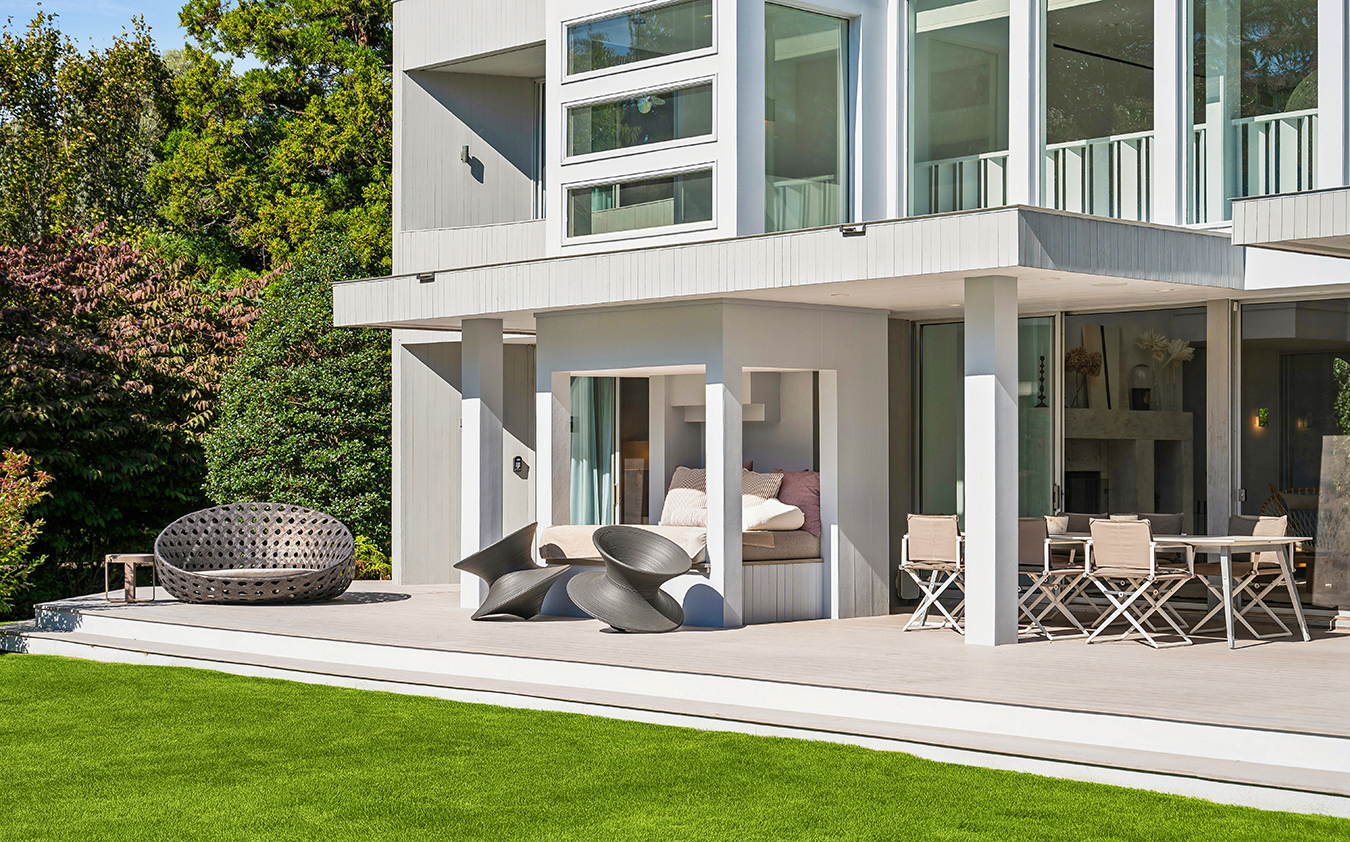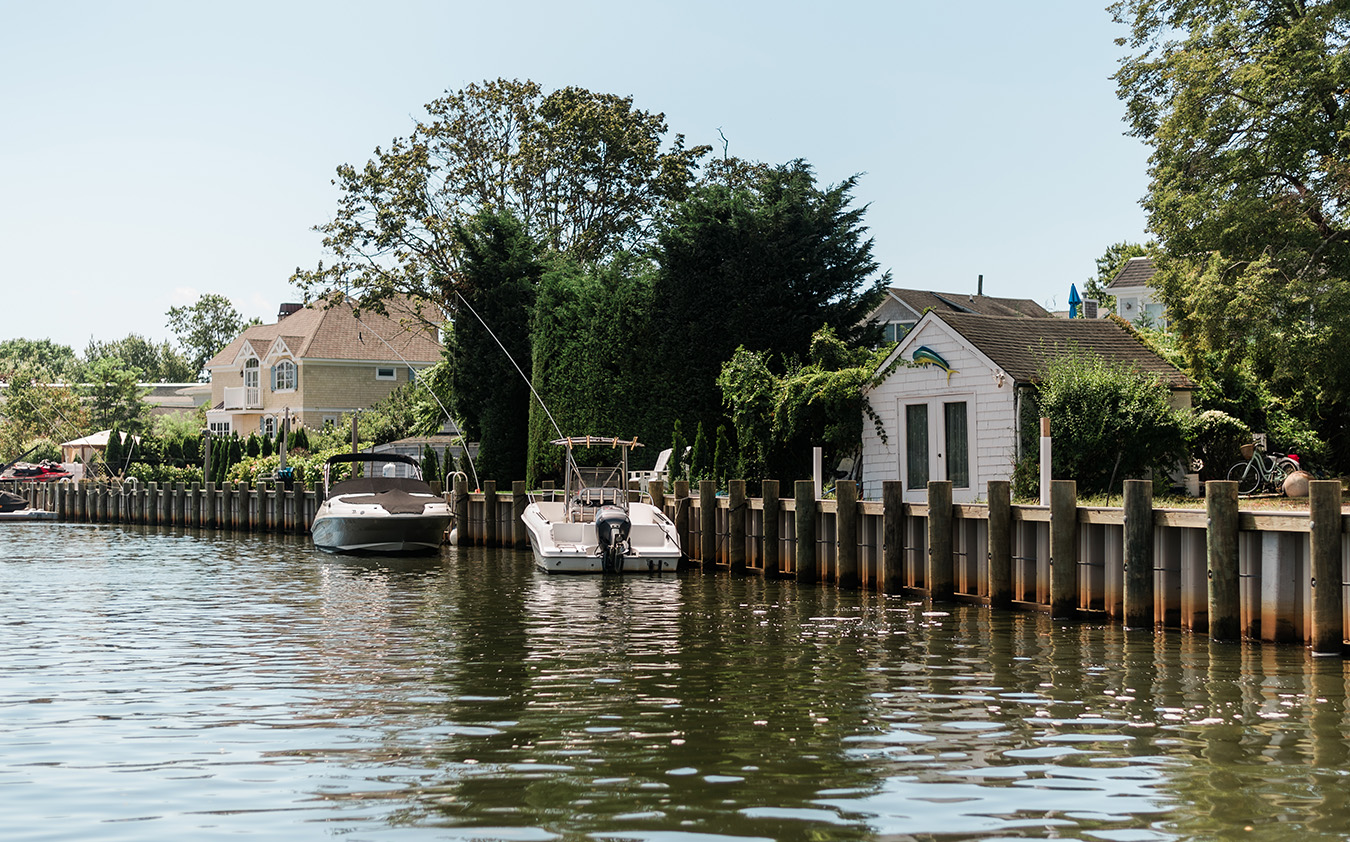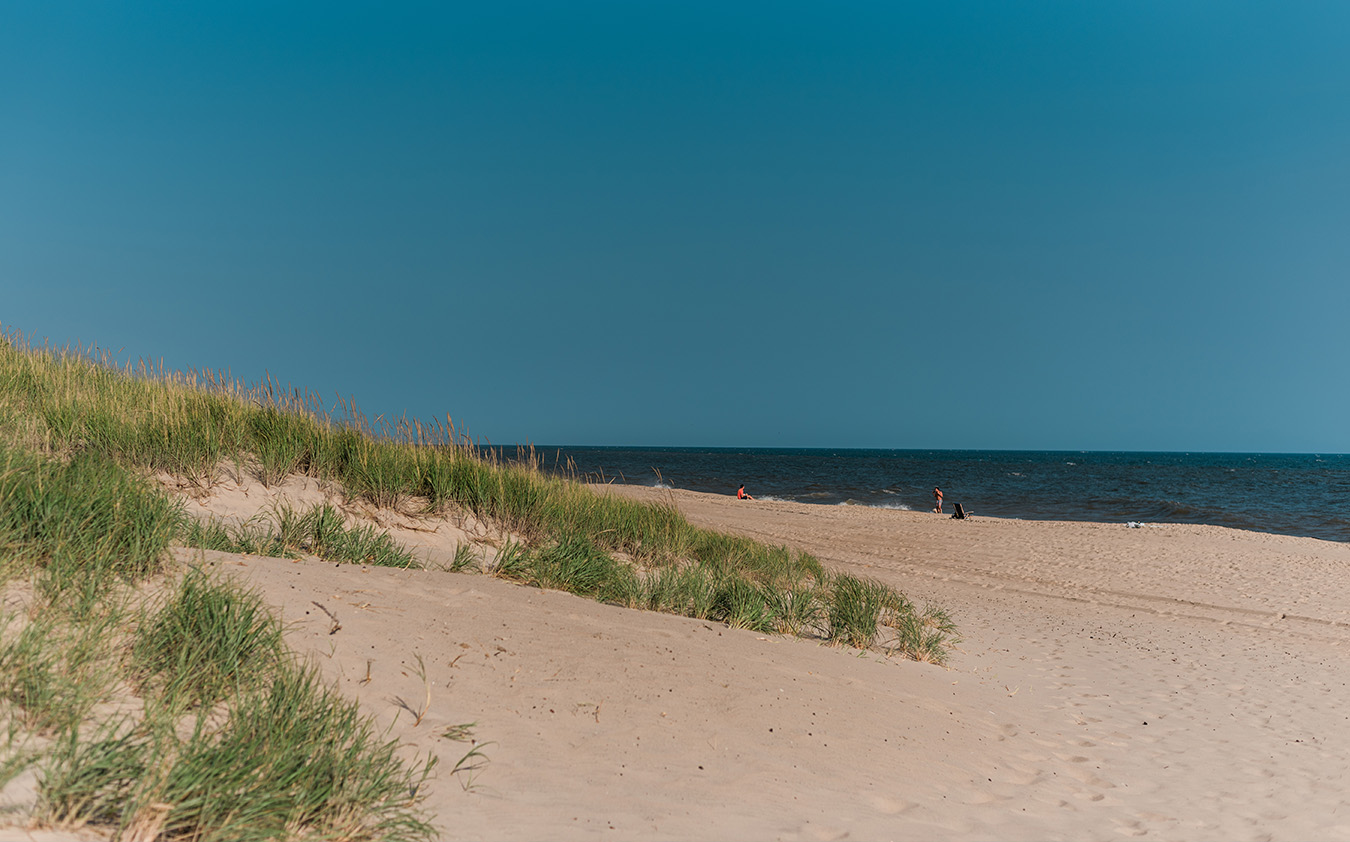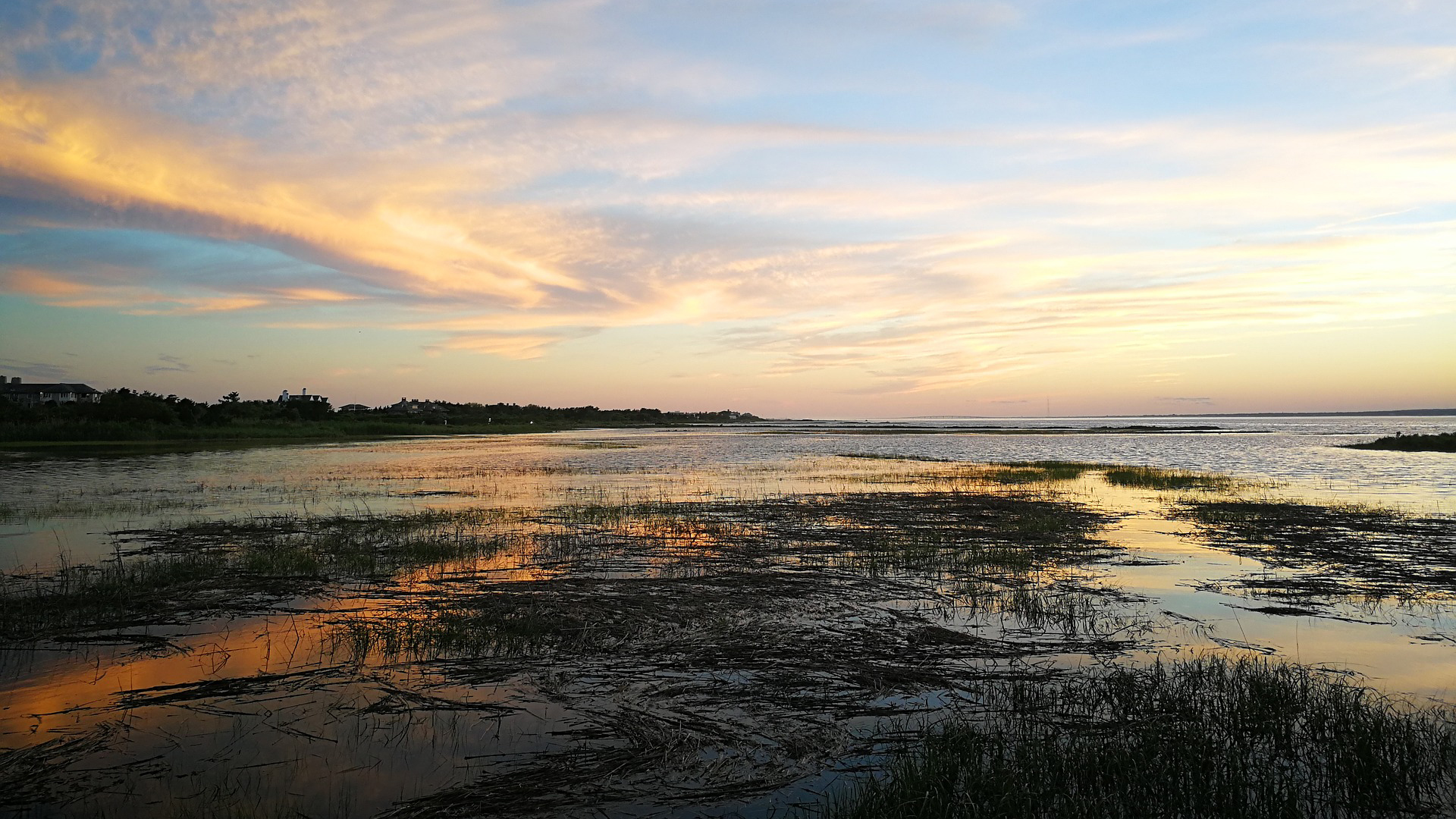
What draws artists to the East End?
The art world has its iconic settings: Monet’s Giverny, Gauguin’s Tahiti, O’Keeffe’s Santa Fe. But there may be no place where the bucolic brew of light, space, and silence comes together in quite as magical a way as the East End of Long Island. Its reputation is well-documented and has long drawn those most attuned to turning their internal landscape into a physical manifestation of art, photographs, and film.
The first artists to arrive on the East End did so with the opening of the railroad here in the mid-19th century, when groups including the Tile Club made sketching expeditions from New York City. Farmers would allow the artists to erect easels in their fields and would even give them hayrides to the most scenic spots, where the sea-stained light filled the open pastures.
Landscape painter Thomas Moran and his wife, Mary Nimmo Moran, were the first serious artists to make a home on the East End, back in 1884. They topped a long list of art-world luminaries who would establish studios here in subsequent decades, either full time or as seasonal antidotes to New York City intensity. Jackson Pollock, Miriam Shapiro, Lee Krasner, Roy Lichtenstein, Robert Rauschenberg, Helen Frankenthaler, and Willem and Elaine de Kooning produced some of their most important work in these towns, and the walls of Southampton’s vaunted Parrish Art Museum are lined with prime examples.
While it is easy to wax poetic about the ebullient past and the prophets who made its name known nationwide, today there is a new generation of creatively endowed East Enders who recognize the allure of the region beyond social media and Crow’s Nest cocktails. They’re accessing that same intangible magic that seeps into the soul and transforms an idea into a masterpiece.
“The sunsets here carry a magic touch. There’s a feeling of being enlightened out by the water,” says Zoe Schwartz, an enraptured 22-year-old painter who started her career after a summer job in the Hamptons introduced her to its mystical nature. Schwartz arrived at East Hampton’s Maidstone Beach some 70 years after landscape painter Jane Wilson, but their attraction to the light is nearly identical.
“Jane Wilson’s art embodied the magical light that she saw on the ocean,” explains Alicia Longwell, chief curator at the Parrish. “Her painting is all about light and atmosphere and how that can change over the course of a day.”
“The sunsets here carry a magic touch. There’s a feeling of being enlightened out by the water.” — Zoe Schwartz, artist
Maryland-born contemporary artist Ryan Keeley spent years surfing and painting up and down the East Coast before discovering Montauk. “If you’re aware of the energy that surrounds you then it’s undeniable that there’s a very special vibe,” he says. “I’ve made some of the best work I’ve ever made out here.”
Other artists say the attraction is not what the East End has, but what it doesn’t: the tremble of traffic, the rush of the streets, the noise of the city. “It’s not necessarily that you’re gaining something, it’s more like you’re taking away everything else that you don’t need,” says East Hampton-based chef and chocolatier Kristofer Kalas, the son of an architect and a photographer who started with weekends on the East End, sailing and meeting friends for dinner. It was this natural landscape that in part inspired his creative culinary pursuits and his business.
“You’re working with all this material and you’re trying to create the purest form of whatever medium that you’re working with,” explains Kalas. “And then you can go out and immerse yourself in that nature in a different way. I can go to the beach or woods or trails. There are thousands of things that I can do to get more in touch with nature.
“One thing I always notice every time I’m transitioning from New York City to East Hampton is the air. There’s this particular salt-stained smell, which is not overwhelming like you’re standing next to the ocean but does have a sort of mineral quality that I think is healing and calming at the same time.”
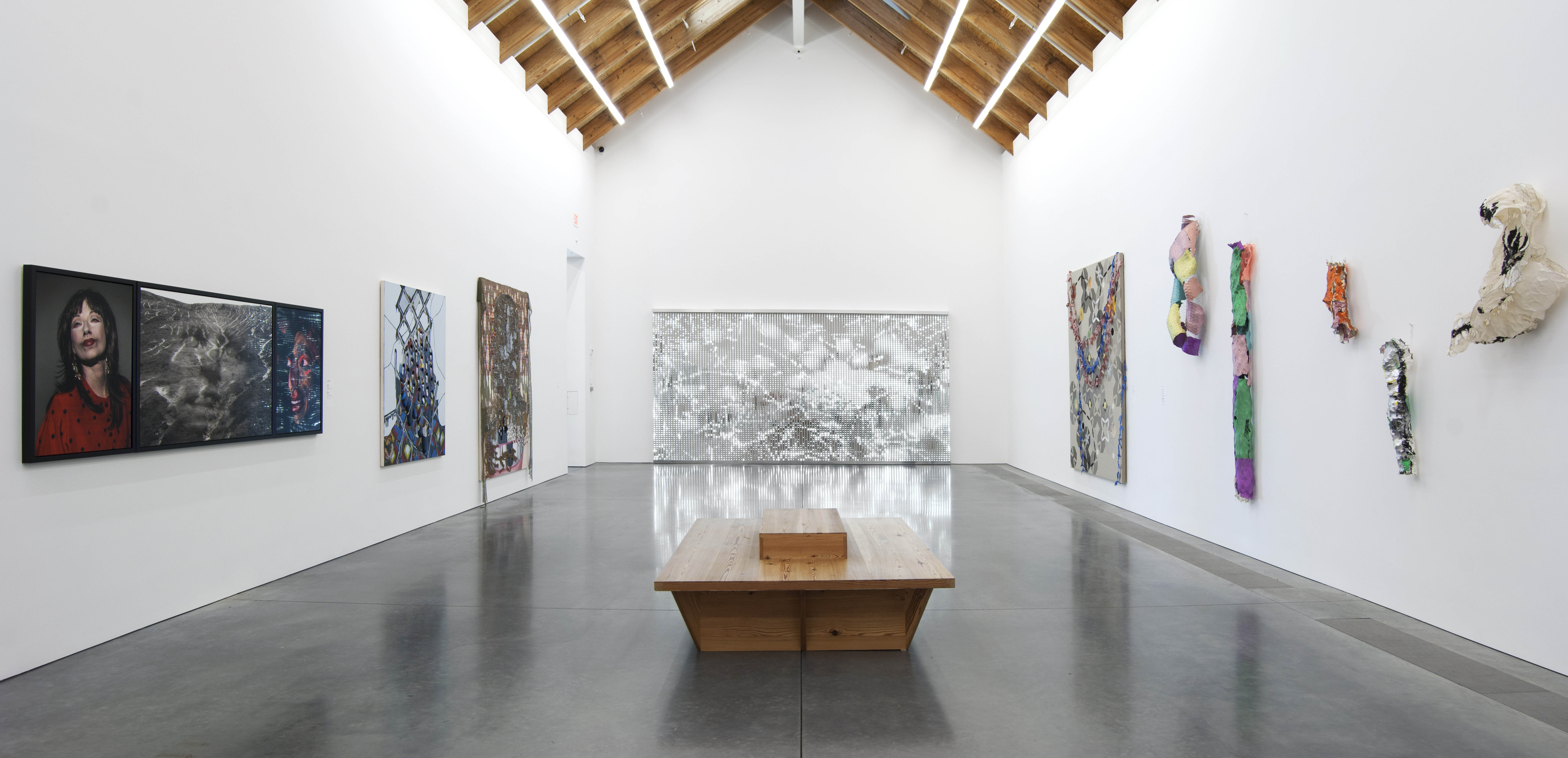
A work of art itself, the Parrish Art Museum in Water Mill is the epicenter of the East End’s thriving community of artists. (Photo: The Parrish Art Museum)
The East End will always be as much a resort as an artists’ respite, with gorgeous sprawling beach homes dating from the second half of the 19th century. And there’s no denying that the region’s legendary attractiveness to elite New Yorkers is the power that has kept the lights on for serious artists. “Pretty much the entire New York art wallet summers in the Hamptons,” says Johan Kugelberg, who, with his wife, Dr. Lila Wolfe, owns the NYC-based cultural archiving company Boo-Hooray. The pair opened the Montauk outpost of their Chinatown gallery in 2017, not only to gather friends for drinks every other Saturday in a beautiful setting, but also as a way to find more clients for the city gallery.
“It’s definitely been delightful seeing the creative people come out of hiding and converge at our openings at the Boo-Hooray Summer Gallery,” says Wolfe. “Some of the most profoundly cool artists, musicians, and creatives who have fed underground culture as well as mainstream culture live on the East End.”
In the end, the artists themselves reveal the secret of the East End’s magical allure. A stroll through the Parrish, taking in the luminous pastels of Jane Wilson’s landscapes or the blinding reflections of April Gornick’s water scenes, makes clear the direct and indirect influence of the ocean.
“It plays tricks with the light, which seems both clear and soft,” the critic and poet Robert Long writes in his superb book, De Kooning’s Bicycle: Artists and Writers in the Hamptons. “It permeates the woods and the potato fields, and you sense it as you walk the streets of the villages.”
This water-warmed light, which Long calls the region’s “principal aesthetic,” has colored the vision of the artists (and non-artists) who have made the trip across Long Island for more than a hundred years. The community will continue to evolve, but the nature that inspires it remains starkly consistent: the majesty of the sea as its waves break at sunrise along Georgica Beach in East Hampton Village, and the sanctity in the shades of light that cascade over the open plains of Bridgehampton’s back roads as they weave through unadulterated fields. But most of all, it’s the essence that allows us to access our souls and translate them into something tangible.
To receive your free copy, stop by a Corcoran office.
[embed_cta url=”https://www.corcoran.com/hamptons”]Find your light in the East End.[/embed_cta]


